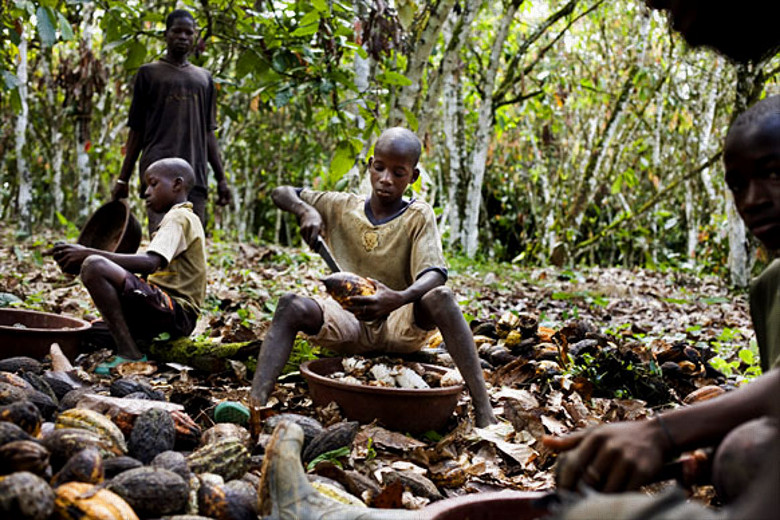In America, we often view eating some chocolate as an occasional treat, or a commonly desired luxury, especially for people on a diet. However, for the children ages 6 and older, in Africa and Asia, who are forced make those chocolate bars without the guarantee of pay, see education as a commonly desired luxury.
Hundreds of thousands of these children are forced to work in unsafe working conditions for long hours, and all they want to do it go to school. Since the chocolate industry is worth over $100 billion a year, this issue needs to be discussed more…
Raising awareness.
There have been three separate groups who tried to raise awareness in the last year by filing lawsuits against Nestle, Mars, and Hershey because they had clear links to child labor.
The groups made claims to the courts of California attempting to sue the companies for failing to clearly state their products are made using child labor on the wrapper, or packaging.
Even though these claims were made on behalf of the California residents, the lawsuits were just a small part o a much larger protest regarding the use of child labor by multinational businesses.
These are some of America’s largest and most profitable companies shouldn’t condone the use of child slaves anywhere in their company, or allow them to turn a blind eye to the obvious mistreatment of some of their overseas workers.
It’s time to demand that they begin acting in a socially and ethically responsible manner starting now. Unfortunately every one of the claims that have been made, so there have still been no changes to the packaging, and you could still unknowingly be eating chocolate made by child labor slaves.
A horrifying history.
Back in 2000 the documentary Slavery: a global investigation, brought worldwide awareness to the use of child labor in the chocolate industry.
The movie uncovered the story of a group of young boys working on a large cocoa farm and lived lives of back-breaking work, constant beatings, and heartache.
Following the release of the movie, chocolate companies appeared to be stunned and disturbed by the discovery and promised to eliminate child poverty in their industry by 2005, but began extending the deadline soon after they made the pledge, and the problem only seems to be getting worse.
Ongoing problems.
The rising population across Africa only means an increasing number of child laborers in the chocolate industry.
In fact, a recent study found a 21% increase in child labor, despite their pledge to end it, particularly in the Ivory Coast, which is the world’s largest producer of cocoa, over the last 5 years.
Since the court ruled that companies don’t need to label chocolate made with child labor, they are able to hide their unethical profit making methods.
So just because a label is unmarked doesn’t mean anything, you are better off buying from a trustworthy organic chocolate maker, who you can believe when they tell you no child was harmed in the production of the chocolate.
Credits: Simple Organic Life.










Sad!
I’d rather be slave than a slav.
I don’t even eat chocolate anyways. Blahh
En África, China, etc. Aún hoy existe la exclavitud !!! Y es lamentable ……….pero sobre todo inhumano y muy triste !!!
Well thanks for the chocolate !!
They should feel disgusted